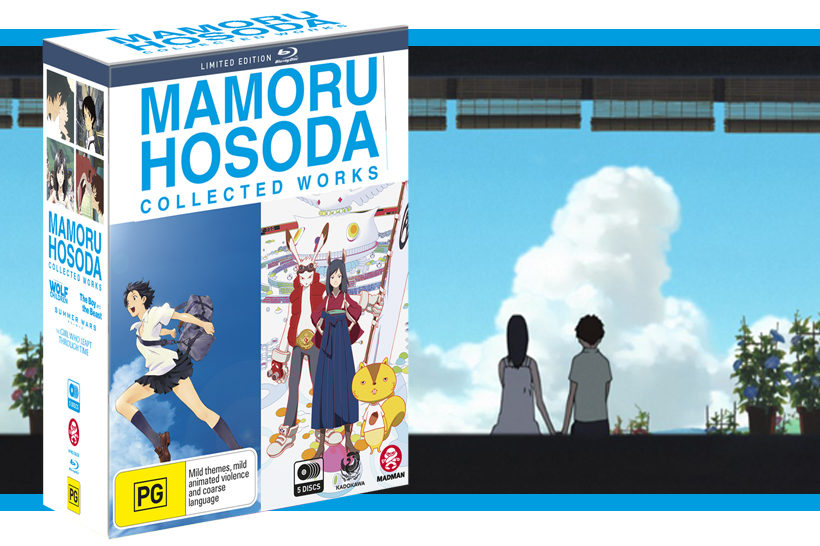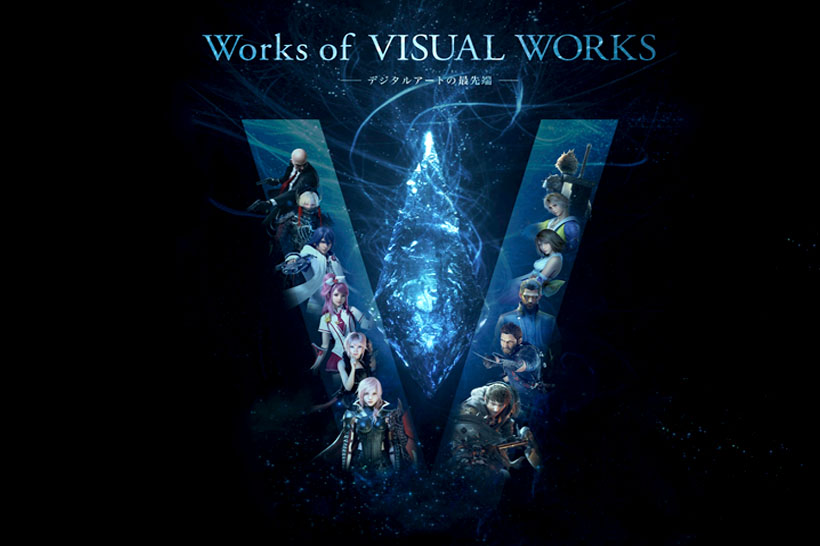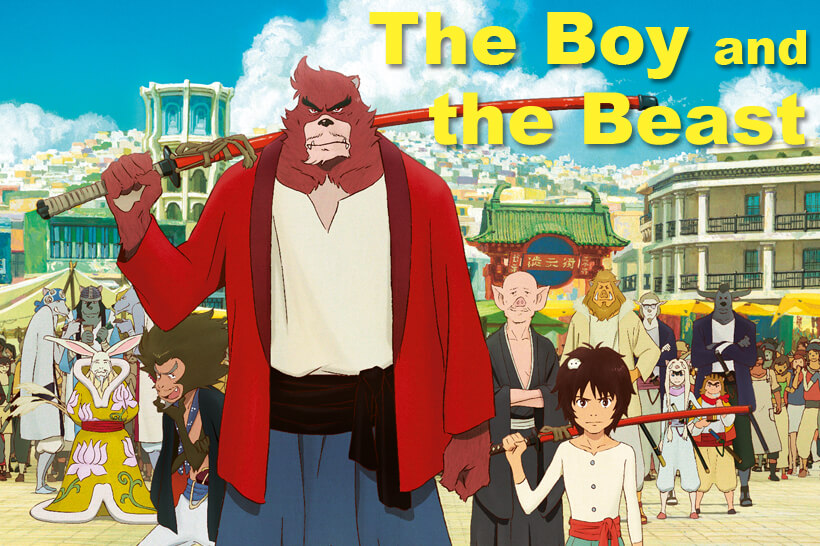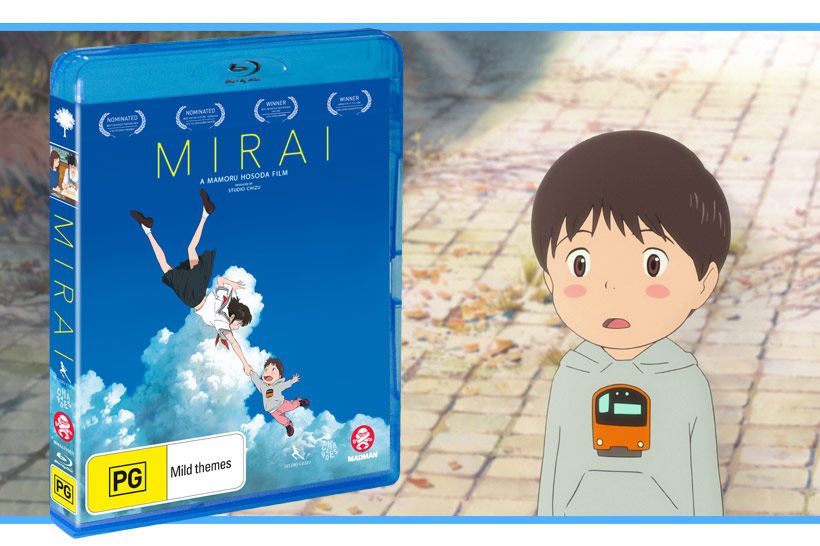Mamoru Hosoda has had a fascinating career that has culminated in the production of several outstanding films, cementing him as a visionary filmmaker in the world of animation. Originally acting as key animator in series such as Dragon Ball Z and Sailor Moon, Hosoda has also directed two short movies for the Digimon franchise; Digimon Adventure and Our War Game!, and the sixth One Piece film, Baron Omatsuri and the Secret Island. However, you won’t find those films in this collection (despite how much I yearn to own copies of Hosoda’s original entries in the Digimon series, rather than the product edited beyond recognition and distributed by 20th Century Fox). No, this collection contains films spanning Hosoda’s career as director of Madhouse films The Girl Who Leapt Through Time and Summer Wars, as well as those produced by his own animation company Studio Chizu, where he directed Wolf Children and The Boy and the Beast. Rather than breaking down each film into separate categories, this review will focus more broadly on overall style and thematic elements present in Hosoda’s works. However, if you are looking for a more in depth review I have also written a piece on his latest film included in this collection, The Boy and the Beast. It not only goes into more detail on a specific film, but more or less reflects my thoughts on his body of work as a whole.
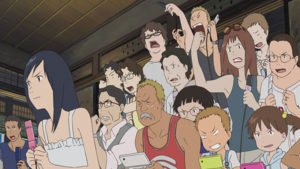
It is difficult to summarise a body of work from a director, such is the case with Hosoda and Studio Chizu. With that being said, there is a thematic connective tissue in the films included in this collection beyond having Hosoda’s name assigned to them. Primarily that each film uses fantastical settings or situations to tell stories about people and relationships. In The Girl Who Leapt Through Time Makoto abuses her newly found time travel power to avoid minor inconveniences, and later to avoid facing other people’s feelings in an effort to keep things from changing. Summer Wars tackles this in an interesting way by portraying an extended family coming together to thwart a deadly computer virus from destroying the world, mixing themes of technology, familial values, and romance into a grounded narrative. Wolf Children and The Boy and the Beast are perhaps the most thematically similar films in this collection, as they tackle themes of parenthood and what it means to raise a child and have that child forge their own path. However, both films approach this in different ways. Wolf Children tells the story of Hana, a single mother struggling to raise her half-wolf children Ame and Yuki, as she questions whether they should be raised as humans or as wolves. The Boy and the Beast expands upon this theme of parenthood by telling the story of Ren, a boy who finds himself apprenticed to the bear-like Kumatetsu after stumbling into the realm of beasts after his mother’s death. Both stories examine how parents and guardians influence children, and the struggles both parties face as children grow older and make choices for themselves.

When discussing Hosoda’s works, I always return to the idea that his films rarely end in comfortable places. This creates a polarising effect, as the stories often don’t resolve in a way that the audience wants them to. Though, I would argue that they still end exactly how they should. This isn’t so much the case with The Girl Who Leapt Through Time and Summer Wars, as though they are films with well-crafted emotional points and The Girl Who Leapt Through Time has one of the most intense bait and switch scenes absolutely screaming with tension I have ever witnessed, they ultimately end in comfortable places. In this respect, they are perhaps the most traditional of Hosoda’s films regarding narrative pay-off. Makoto ends the film smiling and laughing with her friends, looking forward to the future. Young Kenji and Natsuki celebrate the birthday of Natsuki’s grandmother with her family, tentatively beginning a relationship together.
In comparison, Wolf Children and The Boy and the Beast are much messier, as the characters ultimately make decisions that aren’t simple and can result in a sense of loss or disappointment with their narrative choices. In Wolf Children, Ame and Yuki commit to opposite worlds – Ame embraces his wolf heritage while Yuki rejects it in favour of being human. This leads to Ame leaving his family behind, in a decision that is honestly hard to justify as a viewer when it endangers his mother Hana. Similarly, The Boy and the Beast ends with Ren leaving the world of beasts for good, despite living there for eight years and recognising the people that raised him there as family. These are honestly the bare bones of each story, but the note of rejection that both films end on makes them tough to accept. I understand this wholeheartedly, as upon first viewing of these films I was confused and a little frustrated at the decisions the characters ended up making. But upon further viewings I can’t deny that these endings resonate and ultimately, just feel right. As I’ve said before, Hosoda’s films often don’t end where you want them to, but they definitely end where they should. Wolf Children is not a story about accepting both parts of yourself, and The Boy and the Beast is not a story about a boy who moves between both worlds as he wishes. They are stories about parenthood and giving children the space to make decisions, regardless of where those decisions take them. As such, finality is an important aspect to these narratives even if that finality is frustrating. Regardless, I still feel that these films resonate powerfully, and even if the films end in places that are uncomfortable, there is something positive in how these endings can illicit discussion and one’s response to them can warrant an interesting introspection.

Hosoda and the team he works with are masters of using time and space in animation. A particular favourite technique of mine that I see appear often in his works is the panning shot – where the camera sweeps horizontally through a scene in an uncut shot. It is used in Wolf Children to illustrate the passage of time as Ame and Yuki attend school together, showing their differing experiences throughout the years as a beautiful soundtrack plays. This technique is shown again in The Girl Who Leapt Through Time, as Makoto runs through the streets, disappearing from view as she fails to keep up with the panning of the camera, only to run so fast that she overtakes it. Hosoda is also very skilled at using silence. If you are a fan of Studio Ghibli, then you may have heard Miyazaki discuss ‘ma‘, or ’emptiness’. Ma is essentially the silence between action, the moment in a film where things stop for a moment and everything is still. This stillness pervades Hosoda’s films, and he manipulates it to create superb atmosphere and emotion. In Summer Wars there is a moment where the family is grieving, and the camera pans across them silently. Hosoda lets characters experience their emotions in what feels like real time, showing grief in its silence, and anger after a moment’s pause. There’s a particular scene in Wolf Children where Hana discovers something shocking, and all sound cuts away for a moment, as she and the audience collectively hold their breath. It is both wonderful and devastating in impact, and it is this style of Hosoda’s that has made me fall in love with his work.

For fans of animation, this collection is full of some fantastic extras. Each disk has a series of trailers for their respective films, but the real gems are the interview with Hosoda and audio commentary on The Girl Who Leapt Through Time, and the making of documentary featured in The Boy and the Beast. In the interview, Hosoda describes various animation techniques used within the film, including his use of silence. The audio commentary also discusses things like animation style, and how the ‘shadowless’ art style in his films emphasise light when it is most striking. Likewise, the making of documentary in The Boy and the Beast is fascinating and contains insights from Hosoda on the themes for the film and its initial inspiration, while also interviewing other Studio Chizu workers and showing their work on film backgrounds. If you already own these films there doesn’t seem to be any content that hasn’t already been released, aside from several art cards for the films inside each Blu-Ray case. However, it was fun to revisit the making of documentary, and the various cast interviews contained within each disc.
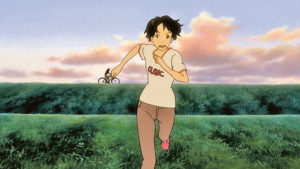
Mamoru Hosoda directs stories that examine relationships in fantastical settings, letting characters be real, and still, and human. His stories don’t always end comfortably, but I maintained that they are still able to resonate with their audience and pose interesting questions even if the endings can be challenging. This is a fantastic collection, with lots of extras for fans to delve into long after they’ve watched all four films. I cannot recommend it enough.
A review copy was provided by Madman Entertainment to the author for the purpose of this review.
© 2006 TOKIKAKE Film Partners

